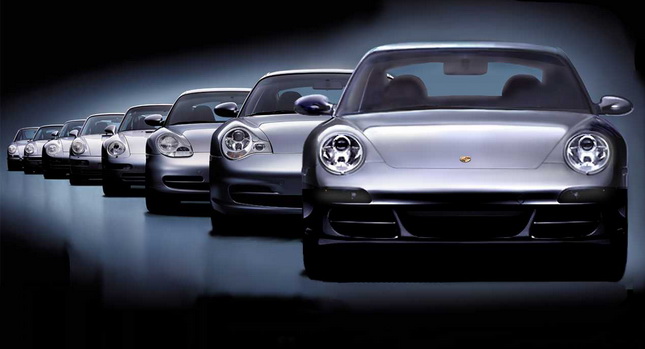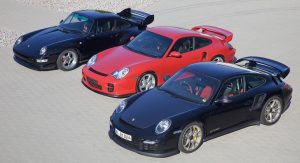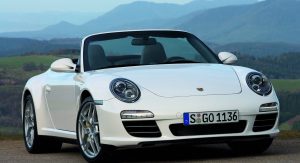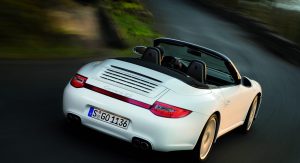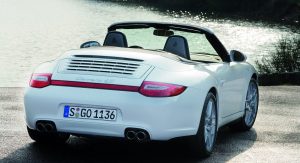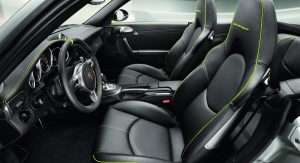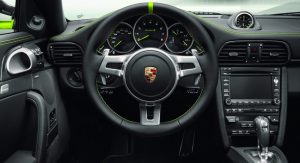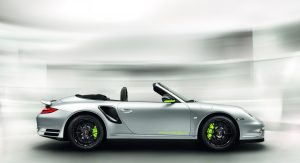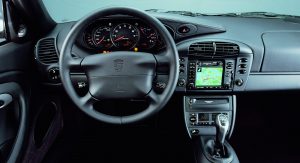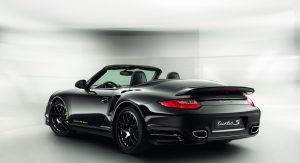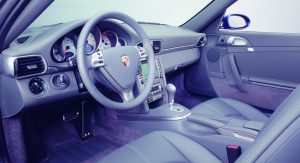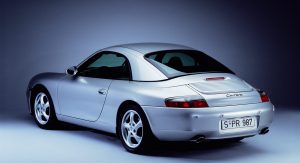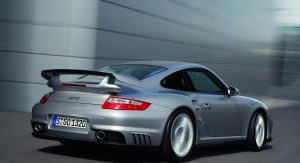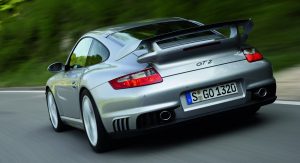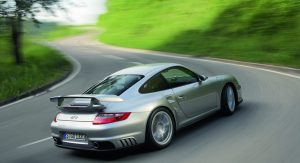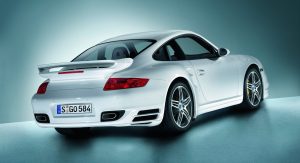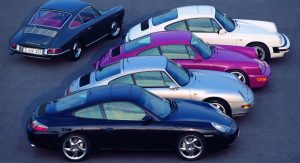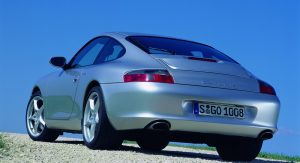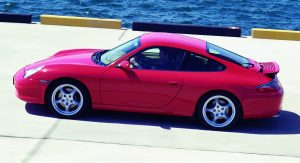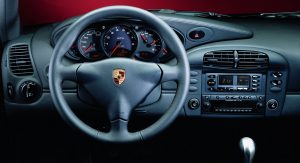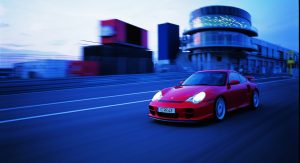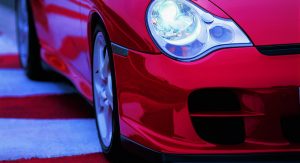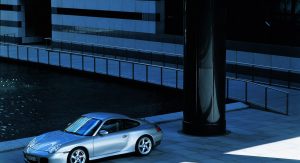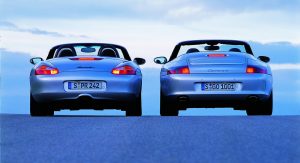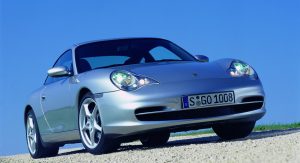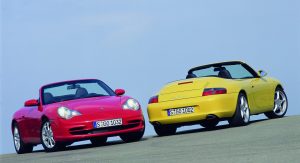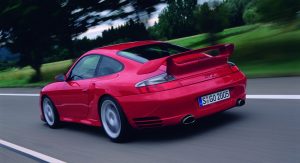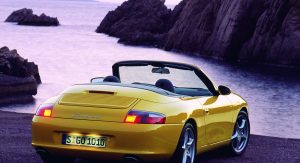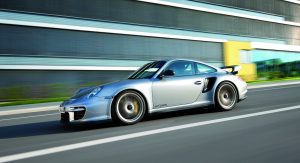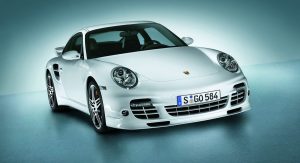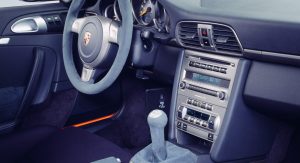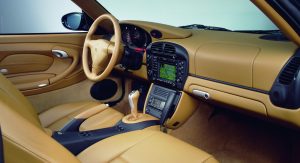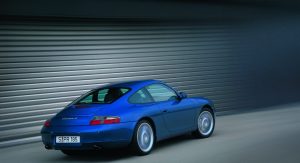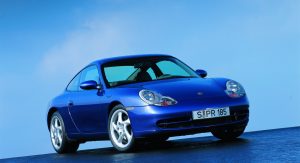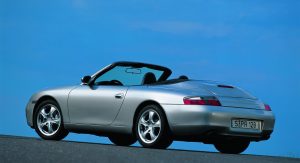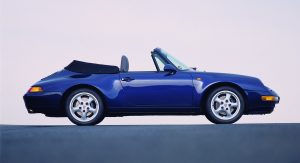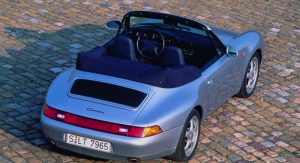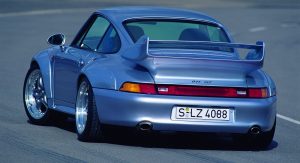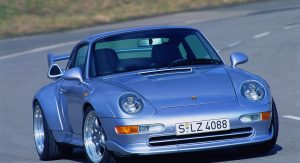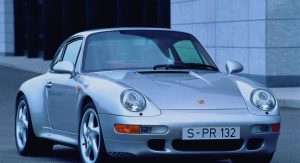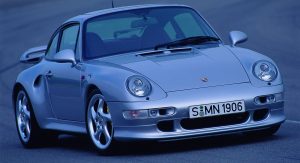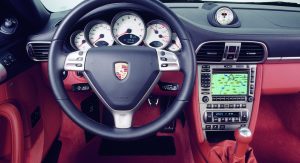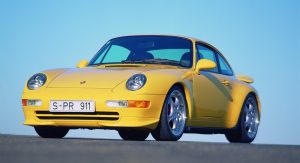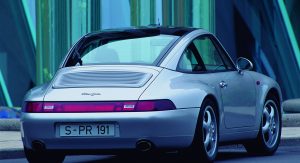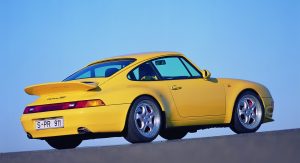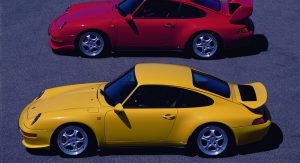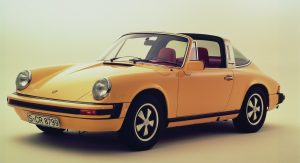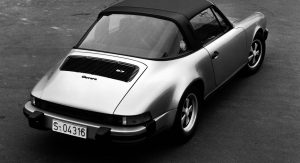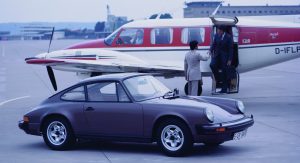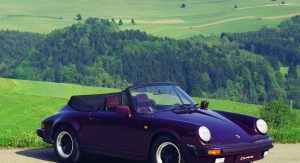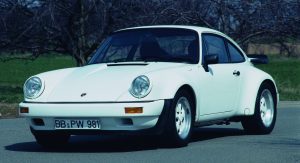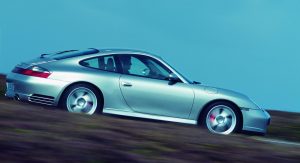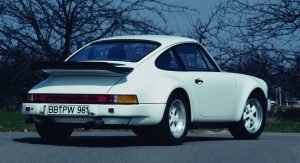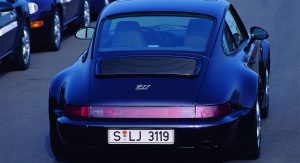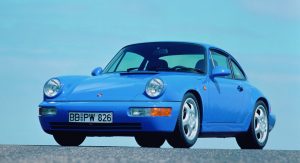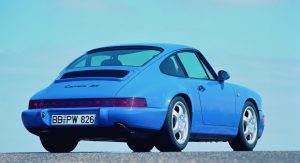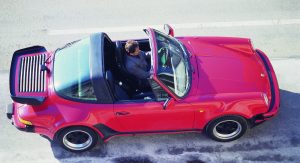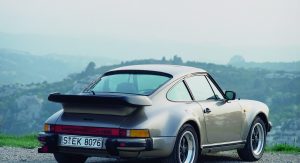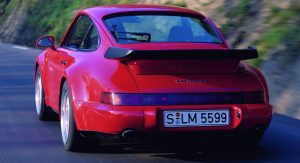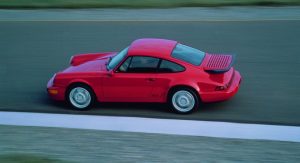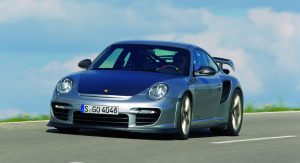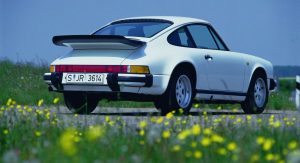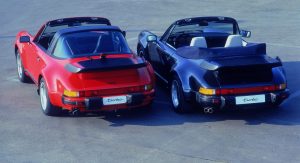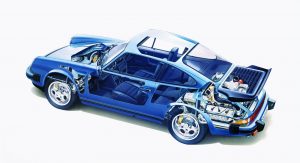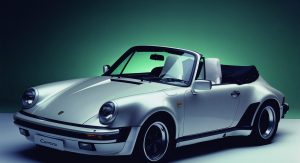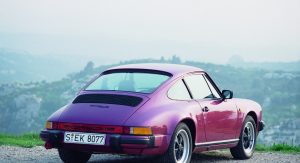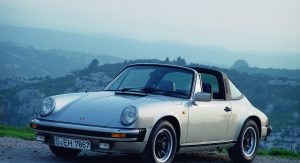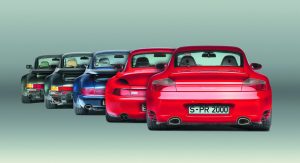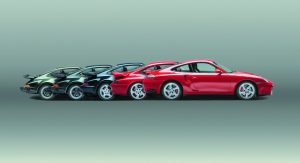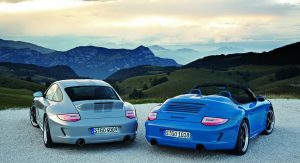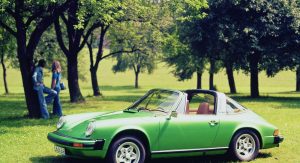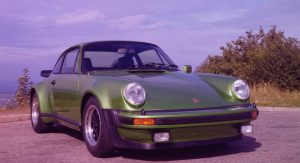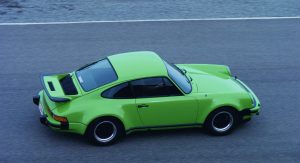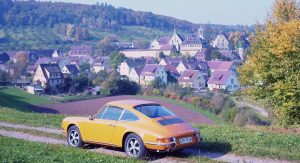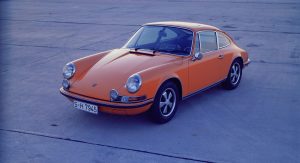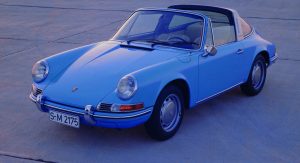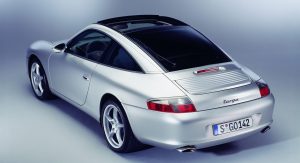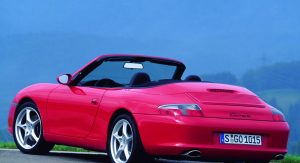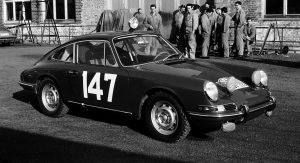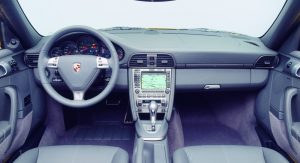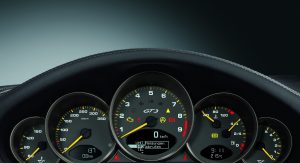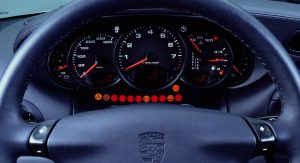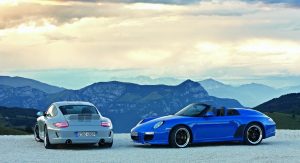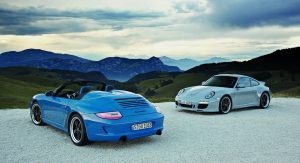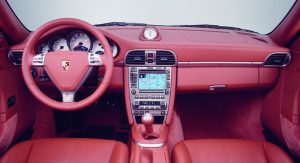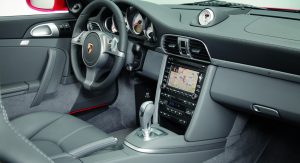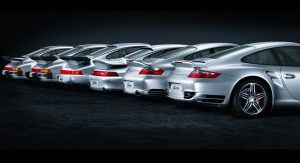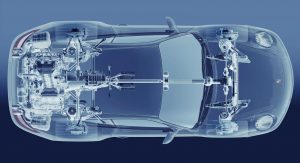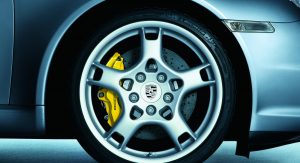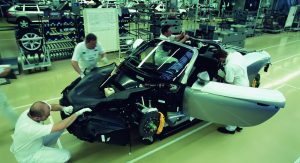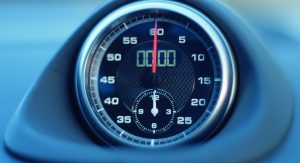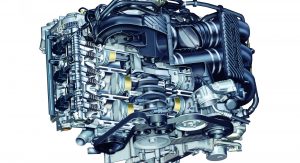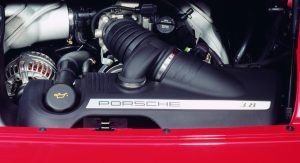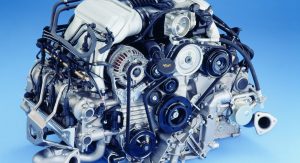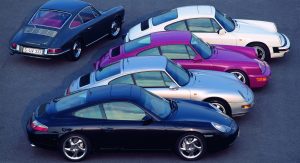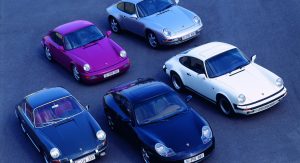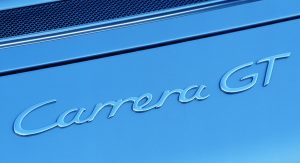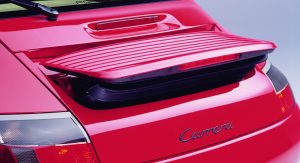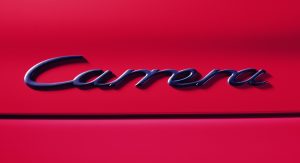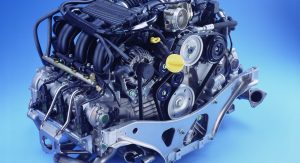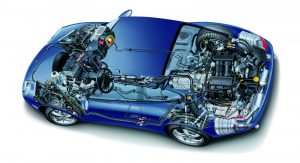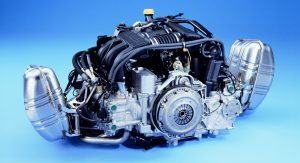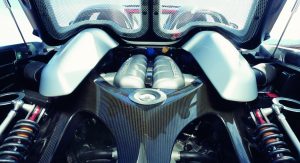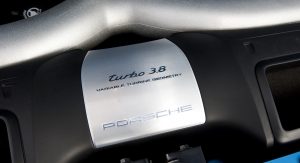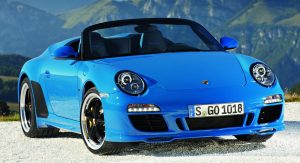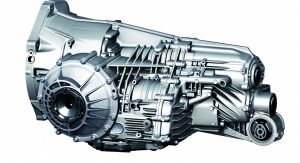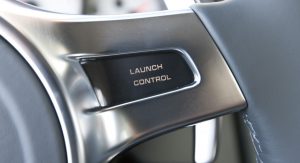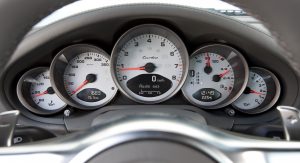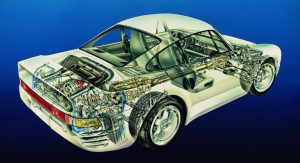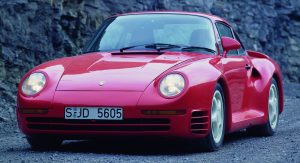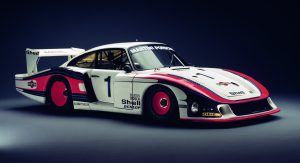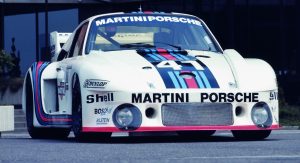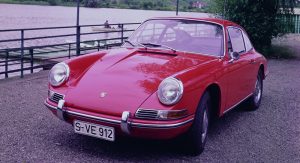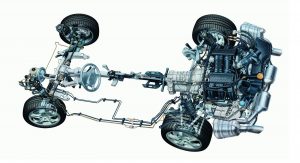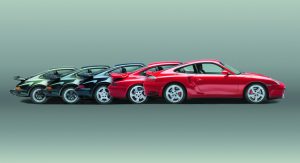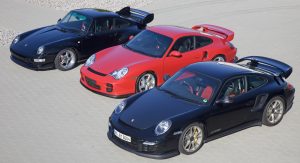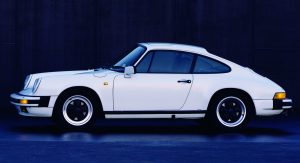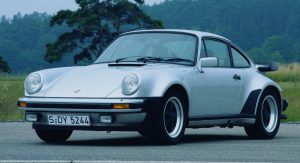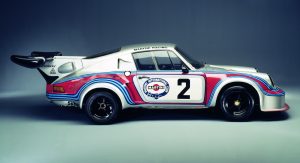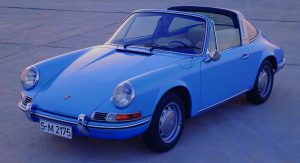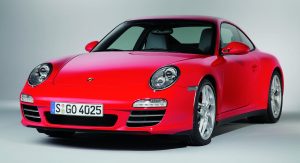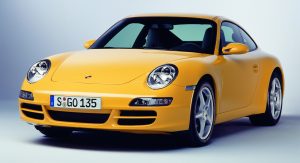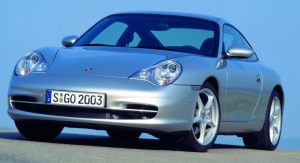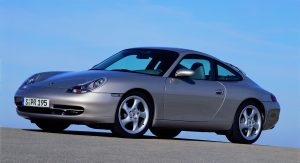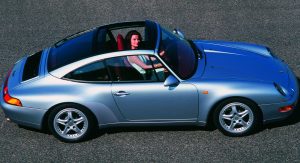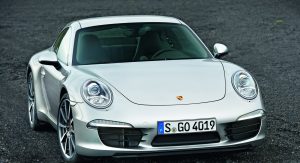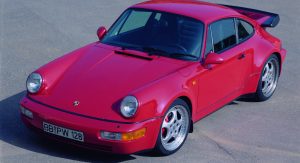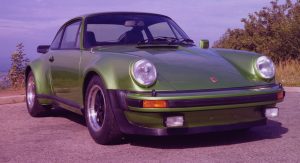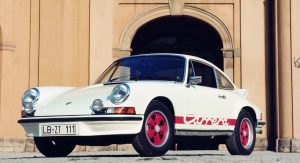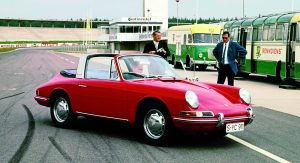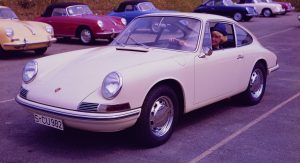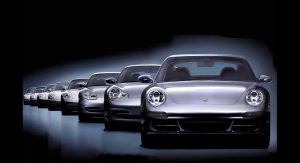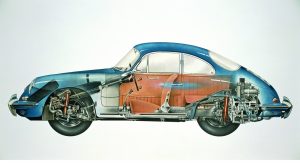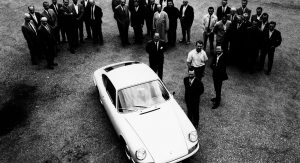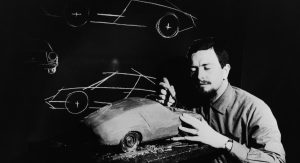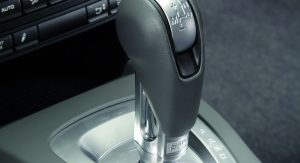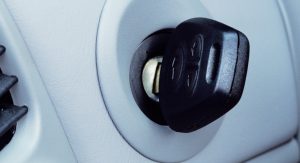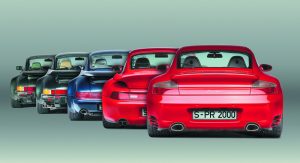If there were ever a more appropriate title for Porsche’s almost five decades old evolution of the 911, it would be “Against all Odds”. The reason being that the iconic model introduced in 1964 by Ferdinand Porsche, has proven to be a runaway success despite its shortcomings.
But let’s take it from the beginning. First of all, it was Porsche’s second model after the 356 and it was unveiled at the Frankfurt Motor Show in 1963. Its original designation was the 901. However, Peugeot had registered all three-digit numbers with a “0” in the middle for its lineup, and Porsche was forced to change the name to 911.
More importantly, it was the layout that should have condemned the 911: physics dictate that the right place to put an engine in a car is either up front or in the middle. However, the 911 had its flat-six placed behind the rear axle.
In theory, this should, and actually did, make it notoriously tricky to drive. But it also offered unparalleled steering feel, something that remains one of the 911 USP’s until today.
Even Porsche lost faith in the 911 in the ‘70s as the company felt that there was no potential for further evolution. Porsche’s Managing Director at the time, Ernst Fuhrman, admitted that the company intended to replace the 911 with the larger and more conventional 928. Amazingly, Porsche’s front-engined V8 sports car won the title of “Car of The Year” for 1978 amidst the global oil crisis.
But even though it was in many aspects, a better sports car than the 911, the 928 ultimately failed in its goal: production begun in 1977 and ceased in 1995. Despite the fact that it was faster than all 911s bar the Turbo, roomier and much easier to drive, the 928 didn’t manage to displace the 911 in Porsche’s customers’ hearts.
Maybe it’s the iconic shape, which despite its many changes through the years, remains the same: when put side by side, you can instantly see that all generations of the 911 share the same theme.
It may also be the fact that the 911 has made itself synonymous with Porsche –something few motoring icons can lay claim to. If you know a thing or two about cars, when you hear about Porsche the first thing that comes to mind is the 911.
It could also be that the 911 remains the world’s only everyday supercar. It’s a sports car that you can drive comfortably every morning to work and back without feeling that it will break down. The 911 won’t make you jump over large sills just to get inside and then won’t allow you to see outside or even tolerate the smallest imperfection on the road. It will even tolerate your wife and kids for a trip – provided the kids aren’t too grown up…
It’s almost like it has a mind of its own (something older versions usually did in certain conditions, much to the driver’s dismay). It remained air-cooled until the ‘90s. Its maker even tried to kill it off. It faced off many rivals –and usually came out on top. It formed the basis for one of the world’s most advanced supercars of all times: the 959. It had, and still has, great success in all kinds of motorsport –not just racing tracks, but even the Paris-Dakar rally.
If we had to have just one car for the rest of our lives, it would most likely be the 911. You may love it or loathe it, but one thing is for sure: the 911 has proven, time and time again, that it is a survivor.
A short timeline of the 911
1964-1989: 911
 The first ever edition of the 911 was powered by a 2.0-liter 130HP air-cooled flat-six mated to a “Type 901” gearbox. It was very compact in size and the design was the work of Ferdinand “Butzi” Porsche, Ferdinand “Ferry” Porsche’s son. The 912 was also launched as a replacement to the 356, with the 911’s bodywork but with a four-cylinder, 90HP 1.6-liter engine.
The first ever edition of the 911 was powered by a 2.0-liter 130HP air-cooled flat-six mated to a “Type 901” gearbox. It was very compact in size and the design was the work of Ferdinand “Butzi” Porsche, Ferdinand “Ferry” Porsche’s son. The 912 was also launched as a replacement to the 356, with the 911’s bodywork but with a four-cylinder, 90HP 1.6-liter engine.
In 1966, Porsche introduced the 911S with a more powerful 160HP engine followed in 1967 the Targa with a removable roof panel. One year later Porsche increased the wheelbase from 2,221 mm to a still very compact 2,268 mm in order to improve the 911’s handling, without changing its overall dimensions.
The 911S received a fuel injection system, and Porsche introduced a semi-automatic four-speed “Sportomatic” gearbox.
In 1970, the capacity of the boxer engine was increased to 2.2 liters, resulting in power upgrades for the base 911T (125HP), the 911E (155HP) and the 911S (180HP).
Another change in capacity, this time to 2.4 liters, was on the cards for the 1972-73 E and F-Series. The 911T got 130HP (140HP in the US), the E 165HP and the S 190HP while a new, stronger transmission, the 905 was also introduced. The increased power of the base, U.S. market 911 was due to the use of Mechanical Fuel Injection, which wasn’t available to other markets that still had to do with carburetors.
 A special mention should be made to the homologation-special 1972-74 Carrera RS. It sported a larger, 2.7-liter engine with 210HP, redesigned suspension, larger brakes and enlarged wheel arches. It is still considered a classic and, perhaps, the purest 911 ever made.
A special mention should be made to the homologation-special 1972-74 Carrera RS. It sported a larger, 2.7-liter engine with 210HP, redesigned suspension, larger brakes and enlarged wheel arches. It is still considered a classic and, perhaps, the purest 911 ever made.
In 1974, the larger capacity engine of the RS made it to the rest of the range, which comprised of the 911, 991S and 911 Carrera. It also gained different looks thanks to bigger bumpers due to stricter US safety regulations. One year later the 911 Turbo was introduced. It had a wider bodywork, the now famous “whale tail”, a capacity of 3.0 liters and an output of 260HP that eventually topped 300HP when the boxer’s capacity rose to 3.3 liters.
In 1981’s Frankfurt Motor Show, Porsche displayed a cabriolet concept, the brand’s first real open top car since the 356. It entered production one year later and has since remained in the 911’s line-up. In 1984, the 911 gained a new 3.2-liter engine and the “Carrera” moniker was adopted by the regular versions. A new Getrag gearbox, the G50, was added in 1987.
1989-1993: 964
 The first major changes were implemented in the 1989 911, code-named 964. Drawing from the 959’s technology, it was first launched in a four-wheel-drive configuration as the Carrera 4, one year ahead of the RWD Carrera 2.
The first major changes were implemented in the 1989 911, code-named 964. Drawing from the 959’s technology, it was first launched in a four-wheel-drive configuration as the Carrera 4, one year ahead of the RWD Carrera 2.
It featured a completely redesigned chassis and more aerodynamic body, coil springs suspension, ABS, airbags and, for the first time, power steering. Engine capacity grew to 3.6 liters and power to 250HP.
1993-1998: 993
 Famous for being the last air-cooled 911. The 993 retained only the windscreen, windows and doors from the 964 and received a redesigned bodywork. A new multi-link rear suspension improved road manners and while engine capacity remained unchanged, power increased initially to 272HP and, in 1996, to 285HP.
Famous for being the last air-cooled 911. The 993 retained only the windscreen, windows and doors from the 964 and received a redesigned bodywork. A new multi-link rear suspension improved road manners and while engine capacity remained unchanged, power increased initially to 272HP and, in 1996, to 285HP.
The RS badge made a return for a lighter and more powerful RWD version that had a 3.8-liter engine and 300HP. Normally-aspirated models, called the Carrera S and Carrera 4S, could be ordered with the wider Turbo bodywork.
1998-2004: 996
 For the next generation of the 911 Porsche finally gave in and, for the first time ever, produced a water-cooled flat-six for the 996 that put a stop to a 34-year history.
For the next generation of the 911 Porsche finally gave in and, for the first time ever, produced a water-cooled flat-six for the 996 that put a stop to a 34-year history.
Initially criticized for sharing its “egg-shaped” headlamps (that were changed in the 2002 mid-life facelift) and also much of its structure with the smaller and cheaper Boxster, it also had a completely redesigned interior. Engine capacity was still at 3.6 liters, but power climbed to 320HP. The range was expanded with sportier versions such as the RS and GT3.
2004-2011: 997
 Although the 997 was not as big as an evolution in the engineering department as the 996, it sported a much improved styling that appealed greatly to 911 fans.
Although the 997 was not as big as an evolution in the engineering department as the 996, it sported a much improved styling that appealed greatly to 911 fans.
The headlights reminded the 993, the completely redesigned interior was of higher quality and at the same time, more faithful to the original 911. Thus it reached 100,000 sales faster than any other 911 in history.
The 2008 facelift model sported only minor styling changes, such as the redesigned rear lights. Under the skin, though, it entered the 21st century by replacing the obsolete 5-speed Tiptronic auto transmission with the much better 7-speed dual-clutch PDK, while the Carrera 4 got a revised four-wheel drive system.
2012: 991
 Just last week, Porsche lifted the curtains on the next iteration of the 911, codenamed 991, ahead of their world premiere at the Frankfurt car show in September.
Just last week, Porsche lifted the curtains on the next iteration of the 911, codenamed 991, ahead of their world premiere at the Frankfurt car show in September.
For the time being, the Germans have released initial details about the base Carrera and Carrera S coupe models, which are equipped with a 350HP and a 400HP boxer engine respectively. For more information on the 991, check out our post here.
Oh, and one last thing: apart from the rear-engined layout, there are two other things that never changed in any 911: the five-dial instruments layout and the position of the ignition key at the left of the steering wheel.
By Andreas T.
PHOTO GALLERY







